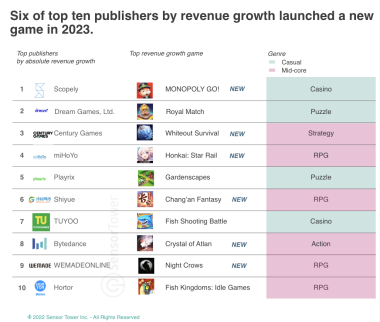Introduction
Mobile games have become a huge industry, with over 2.8 billion mobile gamers worldwide. As a result, advertising in mobile games has become an increasingly popular way for developers to monetize their games. In this article, we will discuss best practices for creating mobile game ads, share 10 best-performing mobile game ads, and compare ARPDAU for different ad formats and game genres. We will also discuss the benefits of in-game purchases versus advertising revenue and which formats (text, video, or images) are most effective. Finally, we will provide five trends of mobile game advertising to watch in the future.
Key takeaways:
- 30% of action genre DAU played platformer style games
- 98% of word genre DAU played classic style games
- 24% of hypercasual genre DAU played platformer style
games, and 23% played puzzle games
The top subgenres in the App Store by DAU (Daily Active Users) can vary depending on the region and time of year, but here are 10 of the most popular subgenres based on recent data:
- Puzzle
- Action
- Strategy
- Adventure
- Simulation
- Casual
- Role Playing Games (RPGs)
- Sports
- Racing
- Card games
These subgenres are consistently popular among mobile gamers and can be a good starting point for developers looking to create successful mobile games. However, it’s important to note that competition within these subgenres can be fierce, so it’s important to find ways to differentiate your game and offer unique features and gameplay.
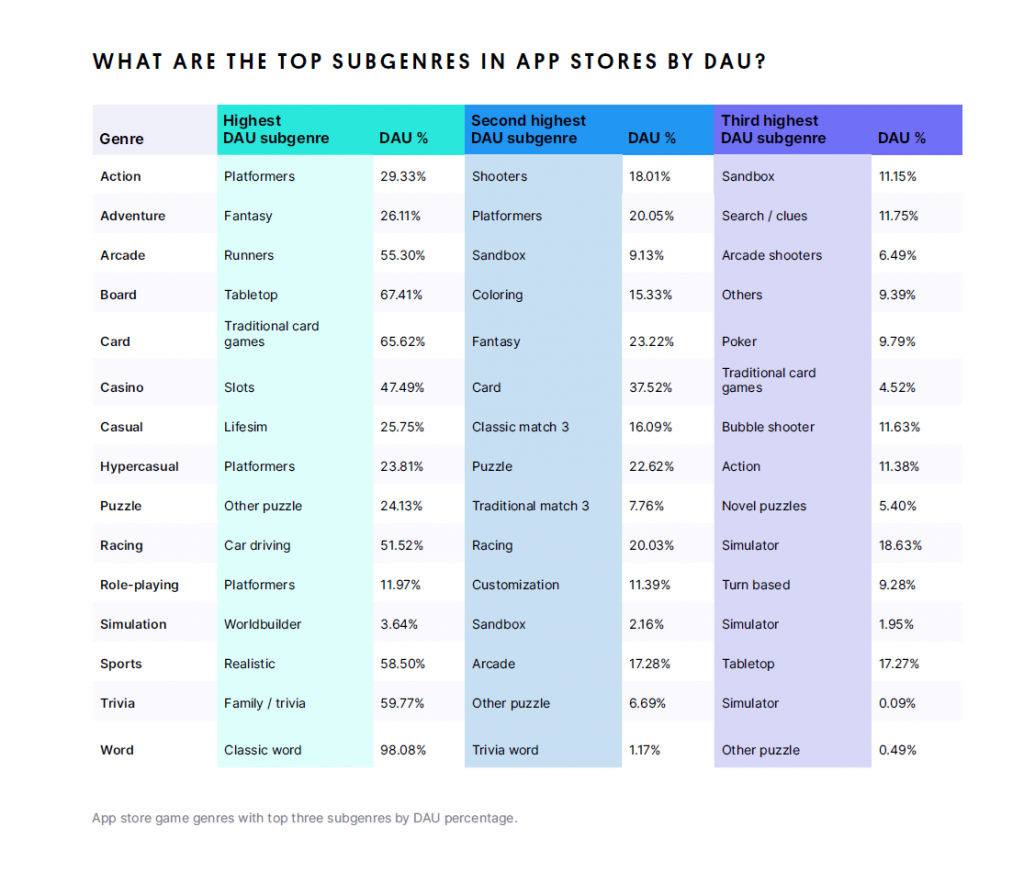
Soft Launching your mobile game
Launching a mobile game can be a complex and risky endeavor, with many factors that can affect the success of your game. A soft launch is a pre-launch testing phase that can help you identify and address issues before the game is released globally. In this article, we will discuss what a soft launch is, the top 5 countries to conduct a soft launch, the recommended duration of a soft launch, why it should be done, and what results to focus on.
What is a Soft Launch for Mobile Game?
A soft launch is a pre-launch testing phase that involves releasing the game in a limited geographic region or market to gather feedback and data. The purpose of a soft launch is to identify and address issues before the game is released globally. This can include technical issues, gameplay balancing, monetization, and user acquisition.
A soft launch typically involves releasing the game in a few select countries or regions, allowing developers to gather feedback and data from a smaller user base before the game is released globally. This allows developers to test the game in a more controlled environment, make adjustments, and optimize the game for a wider audience.
Top 5 Countries to Conduct a Soft Launch
The countries selected for a soft launch should have a strong mobile gaming market, a large user base, and a culture that is similar to the game’s target market. Here are the top 5 countries to conduct a soft launch:
- Canada: Canada has a strong mobile gaming market, a large user base, and a similar culture to the US, making it an ideal market for a soft launch.
- Australia: Australia has a high smartphone penetration rate and a strong mobile gaming market, making it a good market for testing and optimizing your game.
- New Zealand: New Zealand has a smaller population than Canada and Australia, but it has a high smartphone penetration rate and a tech-savvy population, making it a good market for testing and optimizing your game.
- Netherlands: The Netherlands has a high smartphone penetration rate and a strong mobile gaming market, making it a good market for testing and optimizing your game.
- Sweden: Sweden has a tech-savvy population and a strong mobile gaming market, making it a good market for testing and optimizing your game.

Recommended Duration of Soft Launch
The recommended duration of a soft launch can vary depending on the game and the issues being addressed, but it generally lasts between 2-6 months. During this time, developers can gather feedback from players, monitor the game’s performance, and make adjustments and optimizations as needed.
The duration of a soft launch should be long enough to gather enough data to make informed decisions, but not so long that it delays the game’s global launch. It’s important to set clear goals and milestones for the soft launch to ensure that it stays on track and meets its objectives.
The average duration of a soft launch is six and a half weeks. However, different genres see various lengths for soft launches depending on the complexity of the game, the audience they are intended for, and how quickly they churn players. Due to their complexity, mid-core games such as action, role-playing, and strategy have the longest soft launch periods of eight to 10 weeks. These genres often have complex gameplay or online elements that need further optimizations after going live, extending the soft launch time.
Why Conduct a Soft Launch?
There are several reasons why conducting a soft launch is important for mobile game developers:
- Identify and address technical issues: A soft launch can help identify and address technical issues, such as bugs and crashes, before the game is released globally. This can improve the game’s stability and performance and prevent negative reviews and ratings.
- Optimize gameplay: A soft launch can help developers optimize gameplay and balancing based on player feedback and data. This can improve the player experience and engagement and increase retention and monetization.
- Test monetization strategies: A soft launch can help developers test different monetization strategies and adjust them based on player feedback and data. This can help maximize revenue and optimize the game’s business model.
- Test user acquisition strategies: A soft launch can help developers test different user acquisition strategies and adjust them based on player feedback and data. This can help improve user acquisition and retention and increase the game’s visibility and popularity.
Results to Focus on During Soft Launch
During a soft launch, developers should focus on gathering data and feedback to make informed decisions about the game’s performance and optimization. Here are some key results to focus on during a soft launch:
- User Retention: User retention is a key metric to monitor during a soft launch. Developers should track how many players return to the game and how often they play. This can help identify areas of the game that may need improvement and optimize gameplay and features to increase retention.
- User Acquisition: User acquisition is another key metric to monitor during a soft launch. Developers should track how many players download the game and how they found the game. This can help identify effective user acquisition strategies and adjust them accordingly.
- Monetization: Monetization is a crucial component of any mobile game, and it’s important to test different monetization strategies during a soft launch. Developers should track how much revenue the game generates and which monetization strategies are most effective.
- Bugs and Crashes: It’s important to identify and address technical issues, such as bugs and crashes, during a soft launch. Developers should track how often these issues occur and prioritize fixing them to improve the game’s stability and performance.
- Feedback: Gathering feedback from players is crucial during a soft launch. Developers should encourage players to provide feedback and monitor reviews and ratings to identify areas of the game that may need improvement.
Conclusion
Conducting a soft launch is an important step in the mobile game development process. By testing the game in a limited geographic region or market, developers can gather feedback and data to identify and address issues before the game is released globally. The top 5 countries to conduct a soft launch are Canada, Australia, New Zealand, the Netherlands, and Sweden. The recommended duration of a soft launch is between 2-6 months, and developers should focus on user retention, user acquisition, monetization, bugs and crashes, and feedback during this time. By conducting a successful soft launch, developers can optimize their game for a wider audience and increase the game’s chances of success.

Best Practices for Creating Mobile Game Ads
Creating effective mobile game ads is a crucial component of any mobile game monetization strategy. Here are some best practices to keep in mind:
- Keep it short and sweet. Mobile game ads should be no longer than 30 seconds, with the most effective ads being even shorter (around 15 seconds). It’s important to grab the player’s attention quickly and make an impact in a short amount of time.
- Use eye-catching visuals. Mobile game ads should use high-quality, eye-catching visuals to draw in the player’s attention. Use bright colors, bold fonts, and visually appealing graphics to make your ad stand out.
- Show gameplay footage. Mobile game ads that show actual gameplay footage have been shown to be more effective than those that don’t. This gives players a sense of what the game is like and can entice them to download and play.
- Use clear and concise messaging. Your ad messaging should be clear and concise, letting players know what the game is about and why they should play it. Use simple language and focus on the key benefits of the game.
- Test and optimize. A/B testing is crucial when it comes to mobile game ads. Try different ad formats, messaging, and visuals to see what works best with your target audience. Once you’ve identified what works, optimize your ads accordingly.
10 Best Performing Mobile Game Ads
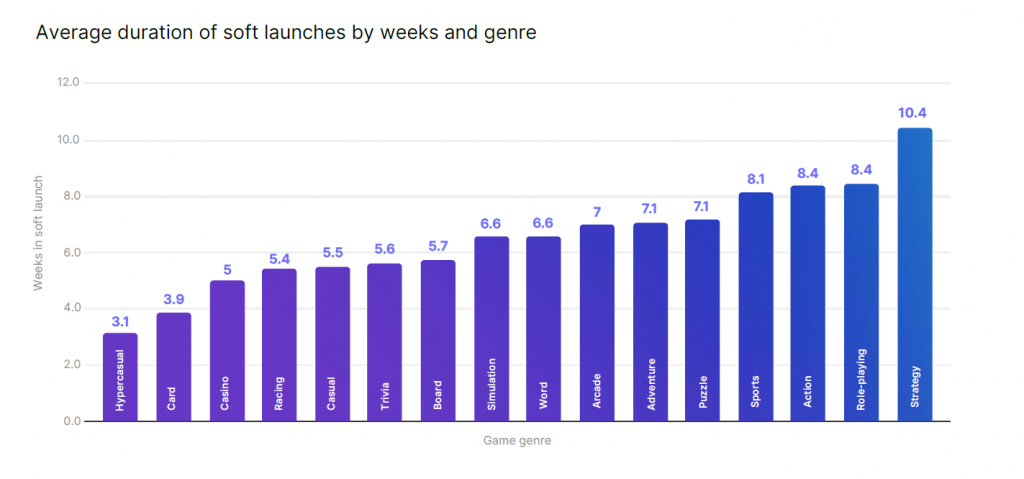
Here are 10 best-performing mobile game ads that have historically been proven to work:
- Clash of Clans – “Revenge” ad
- Mobile Strike – “Arnold’s Fight” ad
- Game of War – “Kate Upton” ad
- Candy Crush Saga – “Sweet Dream” ad
- Clash Royale – “Giant vs. Minions” ad
- Pokemon Go – “Get Up and Go!” ad
- Subway Surfers – “Subway Surfers World Tour: Tokyo” ad
- Angry Birds – “Star Wars” ad
- Gardenscapes – “The Garden” ad
- Homescapes – “Austin’s Adventures” ad
ARPDAU for Different Ad Formats and Game Genres
ARPDAU (average revenue per daily active user) is an important metric for evaluating the effectiveness of different ad formats and game genres. According to a report by Appodeal, rewarded video ads have the highest ARPDAU, followed by interstitial ads and banner ads. In terms of game genres, puzzle games have the highest ARPDAU, followed by casual games and strategy games.

In-Game Purchases vs. Revenue from Advertising In-Game
Both in-game purchases and revenue from advertising in-game can be effective ways to monetize your mobile game. In-game purchases can be particularly effective for games with a loyal user base, as players are more likely to spend money on a game they enjoy. However, advertising in-game can be a more sustainable revenue stream, as it doesn’t rely solely on a small percentage of players making purchases.
Which Formats are Better: Texts, Videos or Images?
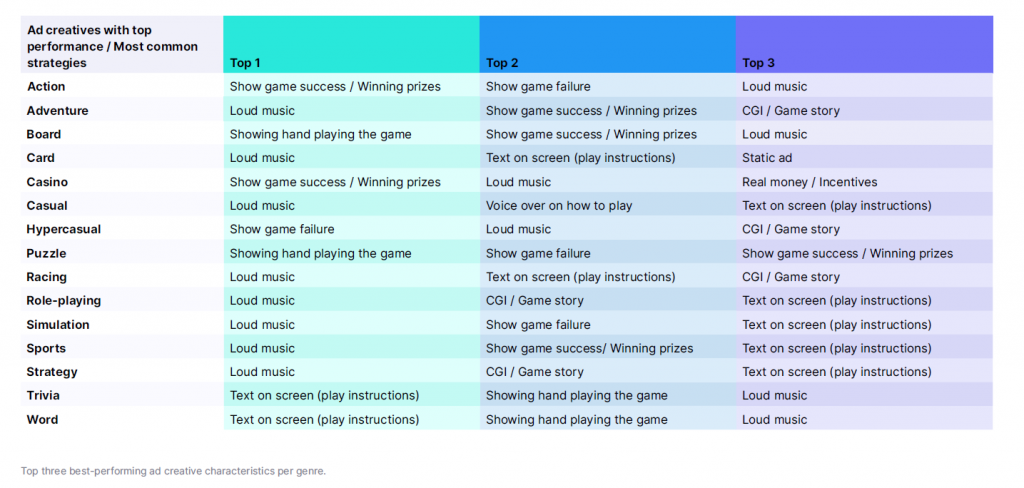
When it comes to mobile game ads, video ads have been
shown to be the most effective format, with higher click-through rates and engagement rates than text or image ads. According to a report by Unity Ads, video ads have a click-through rate of 10.4%, compared to 1.8% for static ads. Video ads are also more memorable and can better convey the gameplay and features of the game.
However, text and image ads can still be effective for certain types of mobile games. For example, a text ad may be appropriate for a trivia game or word game that relies on players’ curiosity and knowledge. An image ad may be appropriate for a game that has a strong visual aesthetic or relies on the player’s imagination.
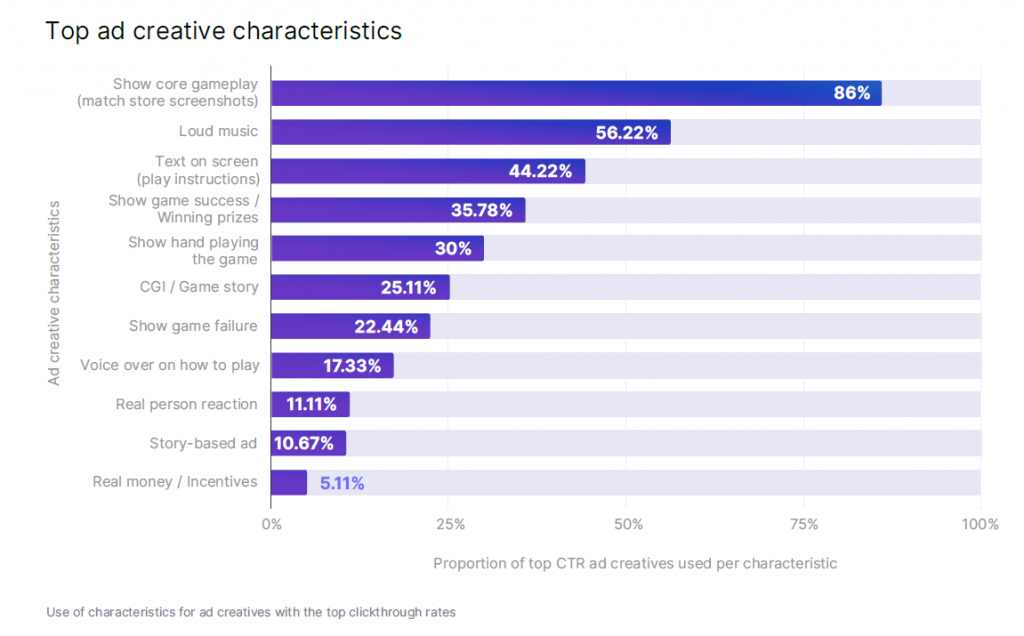
5 Trends of Mobile Game Advertising in the Future

- Personalization: Personalized ads that are tailored to the player’s interests and gameplay habits will become more prevalent in the future.
- Augmented Reality: With the rise of AR technology, mobile game ads that incorporate AR elements will become more common and immersive.
- Interactive Ads: Interactive ads that allow players to engage with the ad content, such as playing a mini-game or answering a quiz, will become more popular and effective.
- Programmatic Advertising: Programmatic advertising, which uses artificial intelligence and machine learning to optimize ad placement and targeting, will become more widespread in the mobile game industry.
- In-Game Sponsorships: In-game sponsorships, where brands partner with mobile game developers to create branded content and ads within the game, will become more popular and lucrative for both parties.
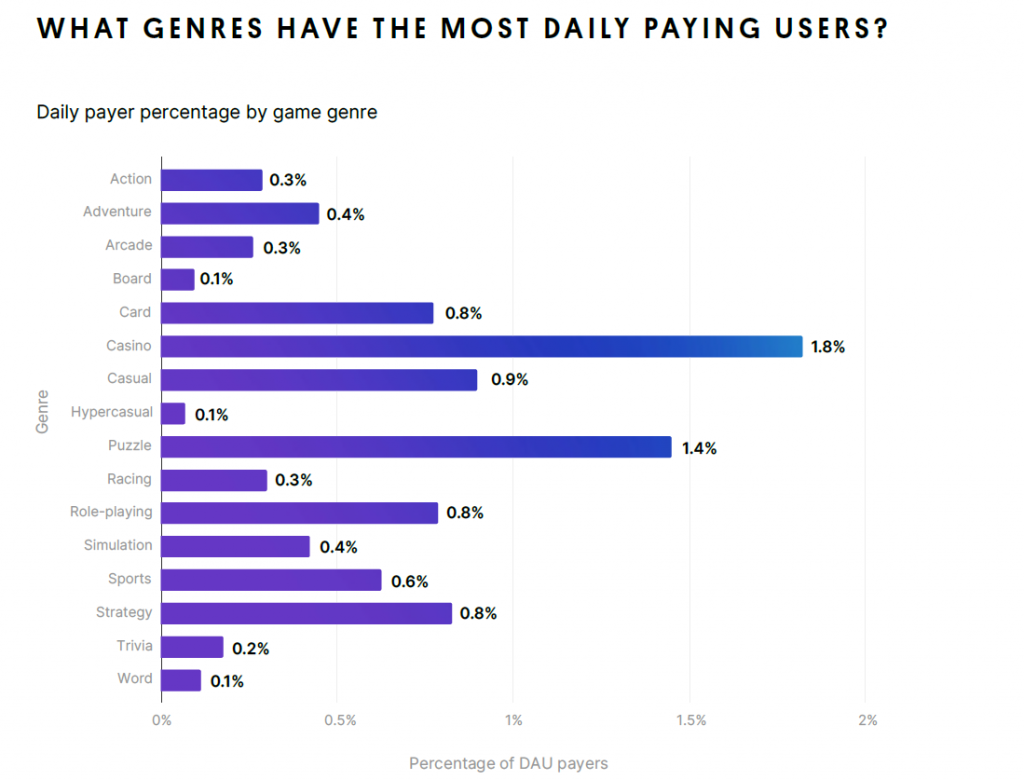
Summary
Creating effective mobile game ads is a critical component of any mobile game monetization strategy. By keeping best practices in mind, using eye-catching visuals, and testing and optimizing your ads, you can create ads that are engaging and effective. Video ads have been shown to be the most effective format, and rewarded video ads have the highest ARPDAU.

In-game purchases and revenue from advertising in-game can both be effective ways to monetize your game. Looking to the future, personalization, AR, interactive ads, programmatic advertising, and in-game sponsorships will be key trends to watch in the mobile game advertising space.

